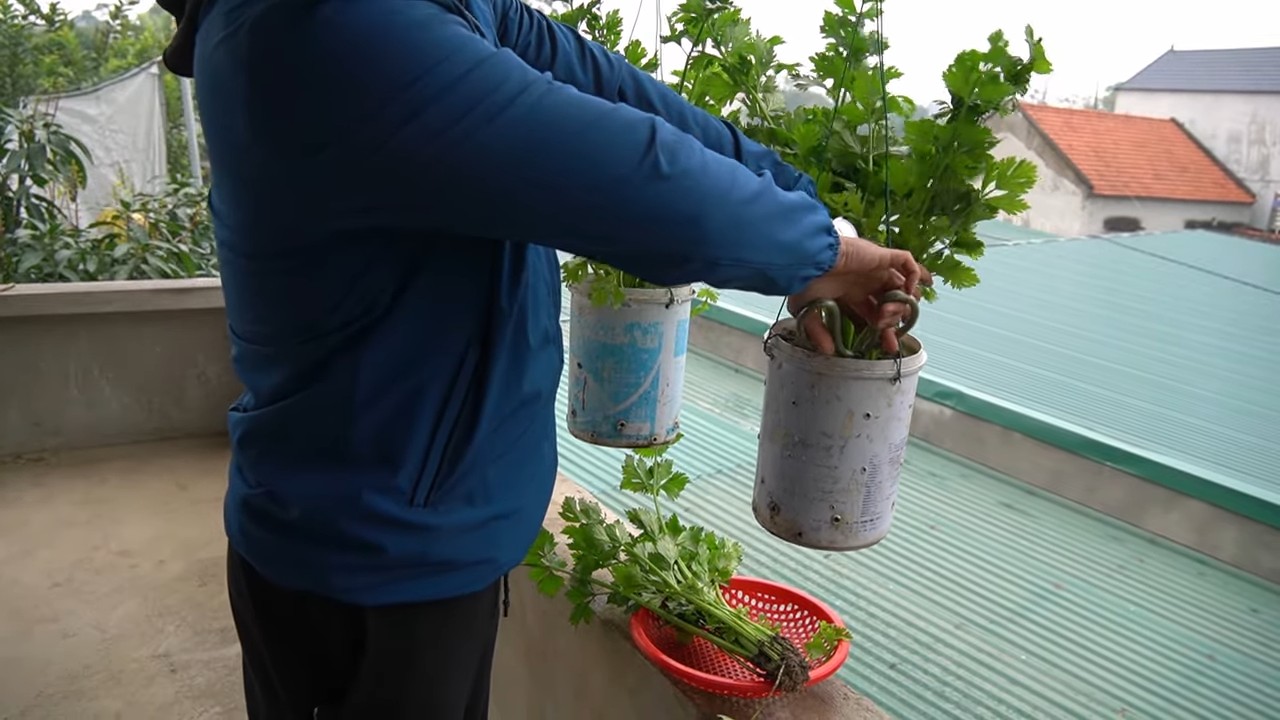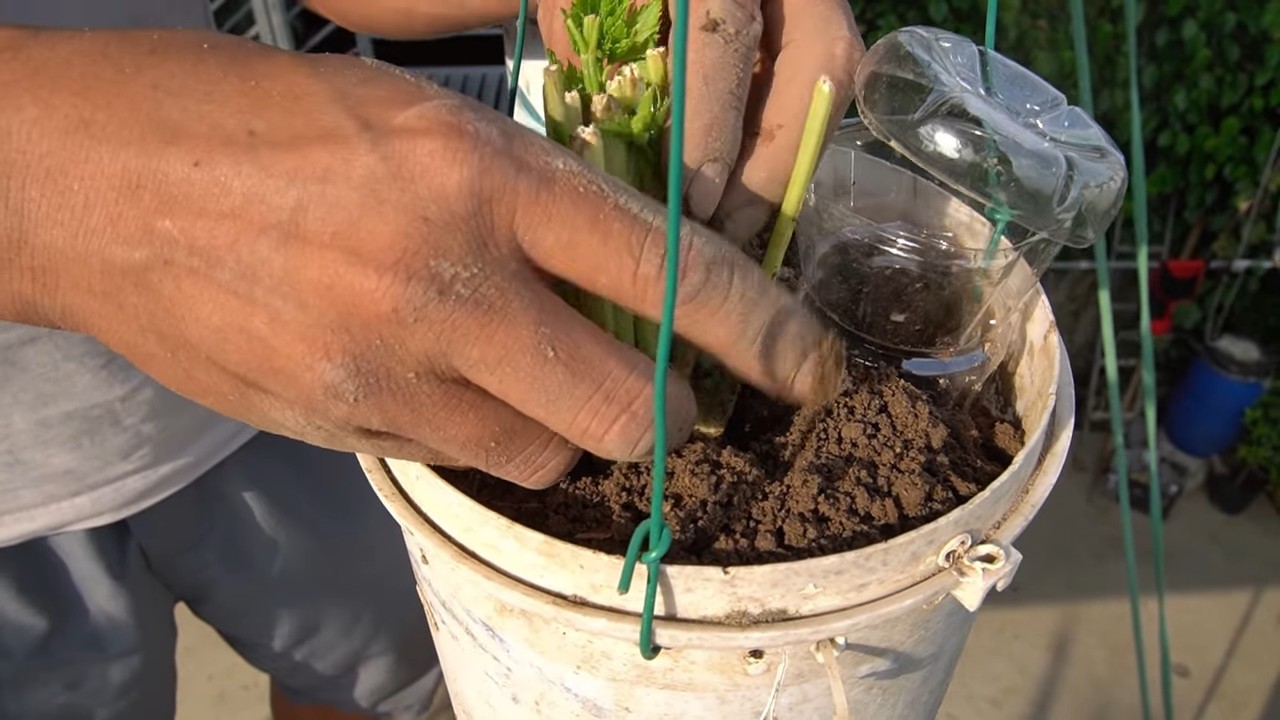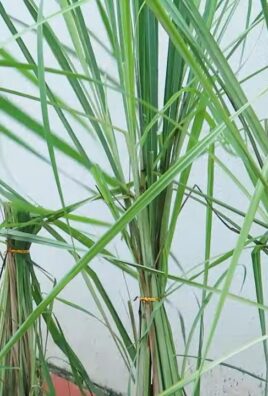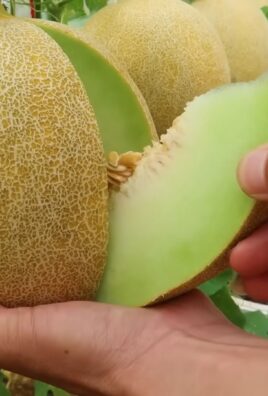Backyard celery growing tips are your ticket to enjoying crisp, flavorful celery straight from your garden! Imagine biting into a juicy stalk, knowing you nurtured it from seed to table. Forget those bland, store-bought bunches – we’re diving into the world of homegrown celery, and trust me, it’s easier than you think!
Celery’s journey from a medicinal herb to a crunchy snack is quite fascinating. Ancient civilizations, including the Romans and Greeks, valued it for its healing properties long before it became a culinary staple. Now, it’s a beloved ingredient in soups, salads, and even as a healthy snack with peanut butter. But why settle for supermarket celery when you can cultivate your own, bursting with freshness and flavor?
Let’s face it, buying celery can be a gamble. Sometimes it’s limp, sometimes it’s bitter, and sometimes it’s just… disappointing. That’s where these backyard celery growing tips come in. I’m going to share simple, effective DIY tricks and hacks that will empower you to grow thriving celery plants, even if you’re a beginner gardener. We’ll cover everything from seed starting to harvesting, ensuring you have a constant supply of this versatile vegetable. Get ready to ditch the store-bought blues and embrace the joy of homegrown celery!

Growing Celery in Your Backyard: A DIY Guide
Hey there, fellow gardening enthusiasts! Ever dreamt of snipping fresh celery stalks right from your backyard for your soups, salads, and snacks? Well, dream no more! Growing celery at home is totally achievable, even if you’re not a seasoned green thumb. It takes a little patience and attention, but the reward of crisp, homegrown celery is absolutely worth it. Let’s dive into this DIY adventure together!
What You’ll Need
Before we get our hands dirty, let’s gather our supplies. Here’s a checklist to make sure you’re prepared:
* **Celery Seeds or Seedlings:** You can start from seeds (which takes longer) or buy seedlings from a local nursery. I personally prefer seedlings for a quicker harvest.
* **Seed Starting Tray (if starting from seeds):** These are essential for germinating seeds indoors.
* **Potting Mix:** A good quality potting mix is crucial for healthy seedlings.
* **Garden Soil:** Rich, well-draining soil is what celery craves.
* **Compost or Aged Manure:** This will enrich your soil and provide essential nutrients.
* **Fertilizer:** A balanced fertilizer (like 10-10-10) or a fertilizer specifically formulated for vegetables.
* **Watering Can or Hose:** Consistent watering is key!
* **Mulch:** Straw, hay, or wood chips to help retain moisture and suppress weeds.
* **Gardening Gloves:** Protect those precious hands!
* **Trowel or Garden Shovel:** For planting and transplanting.
* **pH Testing Kit (Optional):** Celery prefers slightly acidic soil (around 6.0-6.8 pH).
* **Row Covers (Optional):** To protect from pests and frost.
Starting from Seeds (The Patient Gardener’s Route)
If you’re feeling ambitious and want to start from seeds, here’s how:
1. **Sow the Seeds Indoors:** Celery seeds are tiny and need a head start. About 10-12 weeks before the last expected frost, sow the seeds in your seed starting tray filled with potting mix. Gently press the seeds into the soil – they need light to germinate, so don’t bury them too deep.
2. **Provide Light and Warmth:** Place the tray in a warm location (around 70-75°F) and provide plenty of light. A grow light works wonders, but a sunny windowsill can also do the trick.
3. **Keep the Soil Moist:** Water the seeds regularly to keep the soil consistently moist, but not soggy. A spray bottle is perfect for this.
4. **Germination Time:** Be patient! Celery seeds can take up to 2-3 weeks to germinate.
5. **Thin the Seedlings:** Once the seedlings have a few true leaves, thin them out, leaving the strongest seedlings about an inch apart.
6. **Harden Off the Seedlings:** Before transplanting them outdoors, you need to “harden them off.” This means gradually exposing them to outdoor conditions over a week or two. Start by placing them outside for a few hours each day, increasing the time each day.
Transplanting Seedlings (The Quicker Route)
If you opted for seedlings from a nursery, you can skip the seed-starting phase and jump right into transplanting:
1. **Choose the Right Location:** Celery needs at least 6 hours of sunlight per day. Choose a spot in your garden that gets plenty of sun.
2. **Prepare the Soil:** Celery loves rich, well-draining soil. Amend your garden soil with plenty of compost or aged manure. This will improve drainage and provide essential nutrients.
3. **Check the Soil pH (Optional):** Celery prefers slightly acidic soil (around 6.0-6.8 pH). Use a pH testing kit to check your soil’s pH and amend it if necessary.
4. **Dig the Holes:** Dig holes that are slightly larger than the root balls of your seedlings, spacing them about 6-10 inches apart. Celery needs room to grow!
5. **Carefully Remove the Seedlings:** Gently remove the seedlings from their containers, being careful not to damage the roots.
6. **Plant the Seedlings:** Place the seedlings in the holes and backfill with soil. Make sure the top of the root ball is level with the surrounding soil.
7. **Water Thoroughly:** Water the seedlings thoroughly after planting. This will help settle the soil and encourage root growth.
8. **Mulch Around the Plants:** Apply a layer of mulch around the plants to help retain moisture, suppress weeds, and regulate soil temperature.
Caring for Your Celery Plants
Now that your celery plants are in the ground, it’s time to give them the TLC they need to thrive:
1. **Water Regularly:** Celery needs consistent moisture. Water deeply and regularly, especially during hot, dry weather. Aim for about 1-2 inches of water per week.
2. **Fertilize Regularly:** Celery is a heavy feeder. Fertilize every 2-3 weeks with a balanced fertilizer or a fertilizer specifically formulated for vegetables. Follow the instructions on the fertilizer package.
3. **Weed Regularly:** Keep the area around your celery plants free of weeds. Weeds compete with celery for water and nutrients.
4. **Blanching (Optional):** Blanching celery stalks makes them more tender and less bitter. About 2-3 weeks before harvest, you can blanch the stalks by wrapping them with newspaper, cardboard, or soil. Leave the tops of the stalks exposed to sunlight.
5. **Pest and Disease Control:** Keep an eye out for pests like aphids, celery leaf tiers, and carrot weevils. Treat infestations promptly with insecticidal soap or other appropriate methods. Celery can also be susceptible to diseases like early blight and late blight. Ensure good air circulation and avoid overhead watering to prevent these diseases. If you spot any signs of disease, remove the affected leaves immediately.
Harvesting Your Celery
The moment you’ve been waiting for! Here’s how to harvest your homegrown celery:
1. **Harvest Time:** Celery is typically ready to harvest about 80-100 days after transplanting. The stalks should be at least 6-8 inches long.
2. **Harvesting Individual Stalks:** You can harvest individual stalks as needed by cutting them off at the base of the plant with a sharp knife.
3. **Harvesting the Entire Plant:** To harvest the entire plant, cut it off at the base with a sharp knife.
4. **Storage:** Store harvested celery in the refrigerator. It will stay fresh for about 1-2 weeks. Wrap it loosely in plastic wrap or store it in a container of water.
Troubleshooting Tips
Even with the best care, you might encounter some challenges along the way. Here are a few common problems and how to fix them:
* **Yellowing Leaves:** This could be a sign of nutrient deficiency. Fertilize your plants with a balanced fertilizer.
* **Stunted Growth:** This could be due to poor soil, lack of sunlight, or pests. Amend your soil with compost, ensure your plants are getting enough sunlight, and check for pests.
* **Bitter Taste:** This could be due to lack of water or excessive heat. Water your plants regularly and provide shade during the hottest part of the day. Blanching can also help reduce bitterness.
* **Bolting (Premature Flowering):** This can happen if celery is exposed to prolonged periods of cold weather. Protect your plants with row covers if necessary.
Extra Tips for Celery Success
* Choose the Right Variety: Some celery varieties are more heat-tolerant or disease-resistant than others. Do some research to find a variety that’s well-suited to your climate.
* Succession Planting: Plant celery in succession every few weeks to ensure a continuous harvest throughout the growing season.
* Companion Planting: Celery grows well with other vegetables like onions, garlic, and tomatoes.
* Don’t Forget the Leaves: Celery leaves are also edible and can be used in soups, salads, and stir-fries.
Growing celery in your backyard is a rewarding experience. With a little patience and care, you can enjoy fresh, homegrown celery all season long. Happy gardening!

Conclusion
So, there you have it! Mastering the art of growing celery in your own backyard is not only achievable but also incredibly rewarding. We’ve walked you through the essential steps, from selecting the right variety and preparing your soil to nurturing your plants and harvesting your crisp, flavorful stalks. But why should you bother with this DIY project?
The answer is simple: freshness, flavor, and control. Store-bought celery, while convenient, often lacks the vibrant taste and satisfying crunch of homegrown produce. By cultivating your own celery, you gain access to a superior product, free from the potential chemicals and long transportation times that can diminish its quality. Plus, there’s an undeniable satisfaction in nurturing a plant from seed (or transplant) to harvest, knowing you’ve played an active role in providing healthy, delicious food for yourself and your family.
Beyond the basic techniques, there’s plenty of room for experimentation. Consider trying different celery varieties to discover your personal favorite. ‘Utah Tall’ is a classic choice known for its robust flavor, while ‘Golden Self-Blanching’ offers a milder, sweeter taste. You can also explore companion planting to enhance your celery’s growth and deter pests. Marigolds, for example, are known to repel nematodes, while onions and garlic can help ward off celery flies.
Don’t be afraid to get creative with your growing methods, too. If you have limited space, try growing celery in containers. Just be sure to choose a pot that’s at least 12 inches deep and wide to accommodate the plant’s root system. You can also experiment with different mulching materials to conserve moisture and suppress weeds. Straw, wood chips, and even shredded leaves can all be effective options.
And remember, growing celery is a learning process. Don’t be discouraged if you encounter challenges along the way. Every garden is unique, and what works for one person may not work for another. The key is to observe your plants closely, adapt your techniques as needed, and never stop learning.
We firmly believe that anyone can successfully grow celery in their backyard with a little patience, dedication, and the right information. The benefits are well worth the effort, from the superior flavor of homegrown celery to the satisfaction of connecting with nature and providing healthy food for your loved ones. So, grab your gardening gloves, prepare your soil, and get ready to embark on this exciting culinary adventure.
We encourage you to try these backyard celery growing tips and share your experiences with us. Let us know what varieties you’re growing, what challenges you’ve faced, and what successes you’ve celebrated. Your insights can help other gardeners learn and grow, and together, we can create a community of thriving backyard celery growers. Share your photos and stories on our social media channels using #BackyardCelery or leave a comment on this article. We can’t wait to hear from you!
Frequently Asked Questions (FAQ)
What is the best time of year to plant celery?
Celery is a cool-season crop, so the best time to plant it depends on your climate. In regions with mild winters, you can plant celery in the fall for a winter harvest. In colder climates, start seeds indoors 10-12 weeks before the last expected frost and transplant them outdoors after the danger of frost has passed. Alternatively, you can purchase celery transplants from a local nursery. Aim for soil temperatures between 60-70°F (15-21°C) for optimal growth.
How much sunlight does celery need?
Celery thrives in full sun, which means at least 6-8 hours of direct sunlight per day. However, in very hot climates, some afternoon shade can be beneficial to prevent the plants from bolting (going to seed prematurely). If you’re growing celery indoors, use grow lights to supplement natural sunlight.
What kind of soil is best for growing celery?
Celery prefers rich, well-drained soil that is high in organic matter. Amend your soil with compost, aged manure, or other organic materials before planting to improve its fertility and drainage. The ideal soil pH for celery is between 6.0 and 6.8. Perform a soil test to determine your soil’s pH and nutrient levels and adjust accordingly.
How often should I water celery?
Celery needs consistent moisture to thrive. Water deeply and regularly, especially during hot, dry weather. Aim to keep the soil consistently moist but not waterlogged. Mulching around the plants can help conserve moisture and suppress weeds. A good rule of thumb is to water when the top inch of soil feels dry to the touch.
What are some common pests and diseases that affect celery?
Celery can be susceptible to several pests and diseases, including celery leaf tiers, celery flies, aphids, and fungal diseases like early blight and late blight. Regularly inspect your plants for signs of pests or diseases and take action promptly. Use organic pest control methods, such as insecticidal soap or neem oil, to control pests. Prevent fungal diseases by ensuring good air circulation around the plants and avoiding overhead watering.
How do I blanch celery?
Blanching celery is a technique used to reduce its bitterness and make it more tender. To blanch celery, exclude light from the stalks for about two weeks before harvest. You can do this by mounding soil around the stalks, wrapping them with newspaper or cardboard, or using blanching collars.
When is celery ready to harvest?
Celery is typically ready to harvest 85-120 days after transplanting. The stalks should be at least 8 inches long and thick enough to snap easily. You can harvest the entire plant at once or harvest individual stalks as needed.
Can I grow celery from the base of a store-bought stalk?
Yes, you can regrow celery from the base of a store-bought stalk. Cut off the stalks about 2 inches from the base and place the base in a shallow dish of water. Change the water every day. After a few days, roots will begin to grow. Once the roots are about an inch long, transplant the base into a pot filled with soil. Keep the soil moist and place the pot in a sunny location. While this method won’t produce a full-sized celery plant, it can provide you with a continuous supply of celery leaves for flavoring soups and salads.
What are some good companion plants for celery?
Celery benefits from being planted near certain other plants. Good companion plants for celery include onions, garlic, tomatoes, marigolds, and nasturtiums. Onions and garlic help repel celery flies, while marigolds repel nematodes. Tomatoes provide shade and support for celery plants.
How can I store harvested celery?
To store harvested celery, wrap it tightly in plastic wrap and store it in the refrigerator. Celery can last for several weeks when stored properly. You can also freeze celery for later use. Chop the celery into small pieces and blanch it in boiling water for 2-3 minutes. Then, drain the celery and freeze it in freezer bags or containers. Frozen celery is best used in cooked dishes, as it may lose some of its crispness.




Leave a Comment